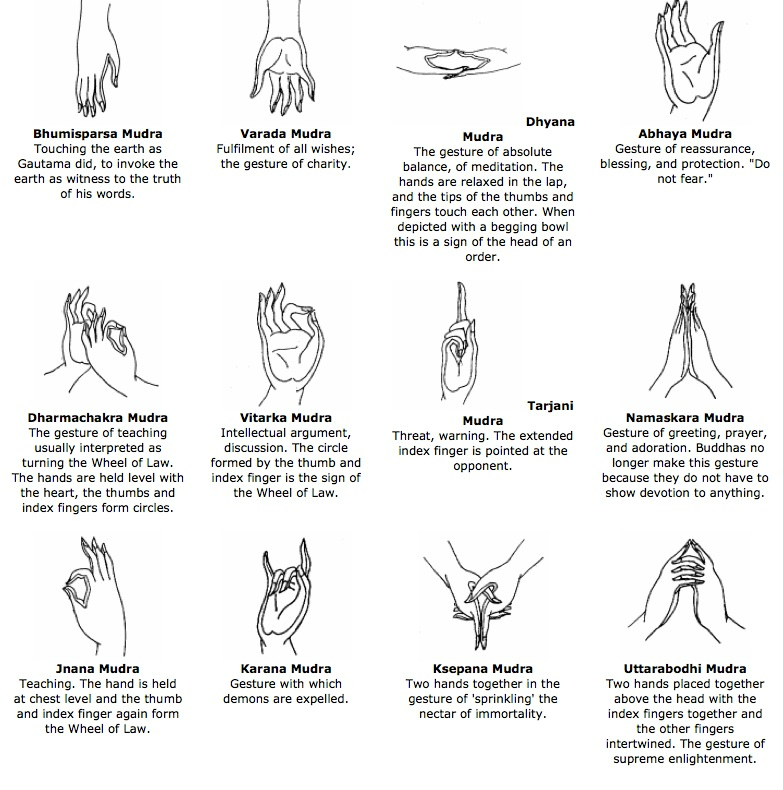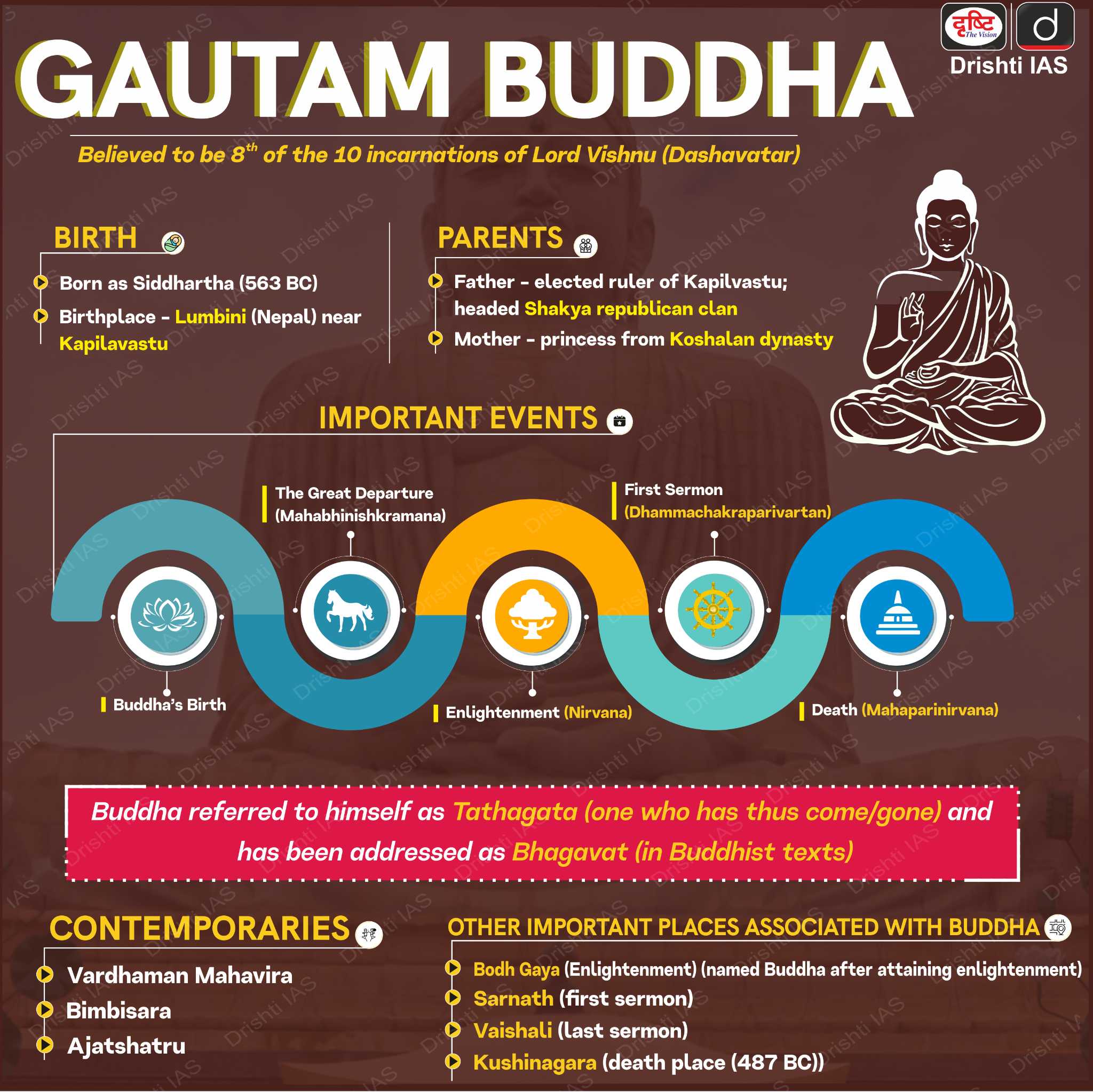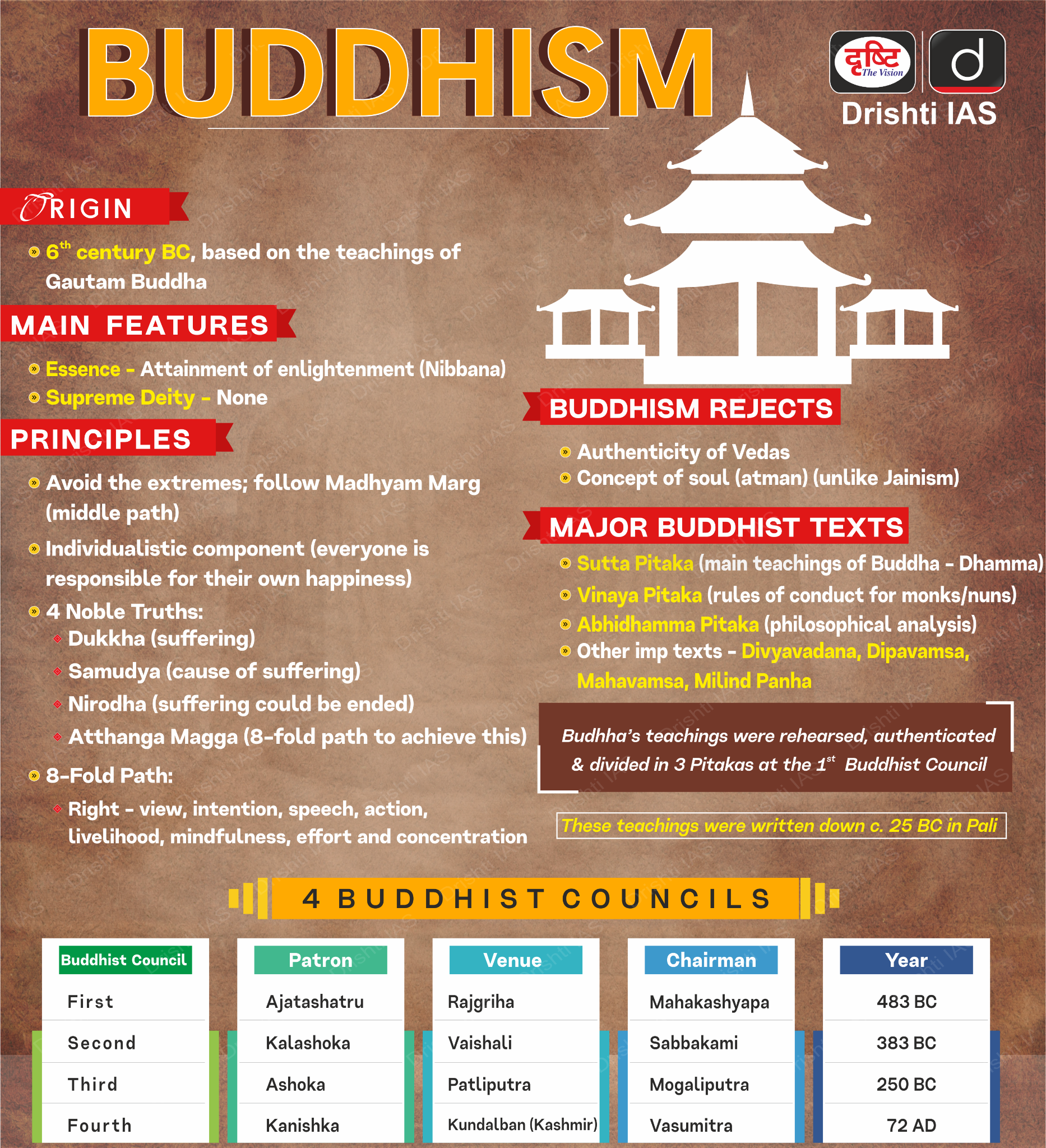Indian Heritage & Culture
Abhay Mudra in Buddhism
- 04 Jul 2024
- 13 min read
For Prelims: Origin of Buddhism, Mudras, Principles of Buddhism, Sandalwood
For Mains: Significance of Buddhism, Indian Literature, Spread of Buddhism in Ancient India.
Why in News?
Recently, the leader of opposition while delivering his speech in Parliament used the symbolic image of Lord Shiva and the ‘Abhay Mudra’ to criticise the government's assault on the idea of India, the Constitution, and those who resisted these attacks.
Leader of Opposition (LoP) in LS
- LoP is a Member of Parliament (MP) who is leader of the largest opposition party having not less than one-tenth seats of the total strength of the Lok Sabha (LS).
- He will be a member of crucial committees such as Public Accounts (Chairman), Public Undertakings, Estimates and also a member of several Joint Parliamentary Committees.
- He is entitled to be a member of various selection committees responsible for appointing heads of statutory bodies like the Central Vigilance Commission, the Central Information Commission, the CBI, the NHRC, and the Lokpal.
- He provides constructive criticism of the government policies and to provide an alternative government.
- The leader of Opposition in both the Houses were accorded statutory recognition under the Salaries and Allowances of Leader of Opposition in Parliament Act, 1977 and are entitled to the salary, allowances and other facilities equivalent to that of a cabinet minister.
- The office of the leader of the opposition is not mentioned in the Constitution.
What is Abhay Mudra?
- Mudras: Mudras are hand gestures that are used in Indian dance, yoga, and meditation practices to convey certain meanings and emotions.
- They are believed to facilitate the flow of prana or vital energy in the body and can have therapeutic benefits.
- In Indian classical dance forms, mudras are used to convey emotions, themes, and stories.
- In yoga and meditation practices, it helps in concentration, relaxation, and the cultivation of certain qualities.
- While there are a large number of esoteric mudras, over time Buddhist art has retained only 5 of them for the representations of the Buddha- DharmaChakra Mudra, Bhumisparsha Mudra, Varada Mudra, Dhyana Mudra and Abhay Mudra.
- Abhay Mudra: It is a hand gesture commonly depicted in Buddhist and Hindu iconography, representing the "gesture of fearlessness".
- It is typically formed with the palm of the right hand facing outward at shoulder height, with the fingers pointing upwards.
- Origin: It is associated with the Lord Buddha immediately after he attained enlightenment, portraying a sense of the security, serenity, and compassion that derive from enlightenment".
- The mudra represents the moment when the Buddha tamed a mad elephant, illustrating his ability to grant fearlessness to his followers.
- Association with Other Religions: The Abhaya Mudra is also found in the iconography of other religious traditions, including Christianity and Jainism.
What are Other Types of Mudras in Buddhism?
- DharmaChakra Mudra: In this the hands are held in front of the chest with the thumb and index finger of each hand forming a circle. The remaining three fingers of the hand are extended upwards, representing the Three Jewels of Buddhism: the Buddha, the Dharma (his teachings), and the Sangha (the community of practitioners). The circle made by the thumb and index finger represents the wheel of the Dharma.
- It symbolises the pivotal moment when Buddha preached his first sermon after enlightenment, signifying the initiation of teaching the Dharma.
- This mudra represents the constant cycle of birth, death, and rebirth, and the Buddha's teachings as the means to break free from this cycle.
- Bhumisparsha Mudra: This mudra involves touching the ground with the fingertips of the right hand, while the left hand rests on the lap.
- It represents the moment of the Buddha's enlightenment, and the gesture symbolises the earth witnessing his attainment of enlightenment.
- It is in this posture that Shakyamuni overcomes the obstructions of Mara while meditating on truth.
- Varada Mudra: In this mudra, the right hand is extended downwards, with the palm facing outwards.
- The 5 extended fingers in this mudra symbolise the five perfections: generosity, morality, patience, effort, and meditative concentration.
- Dhyana Mudra: In this mudra, the hands are placed on the lap, with the right hand on top of the left, and the thumbs touching held at a level above the stomach or thighs.
- This mudra symbolises meditation, concentration, and inner peace.
- Anjali Mudra: This is the most common mudra used in Buddhism, and it involves pressing the palms together in front of the chest, with the fingers pointing upwards.
- It represents respect, greeting, and gratitude.
- It is a hand gesture, very similar to Namaskara or Namaste.
- Vitarka Mudra: This mudra is also known as the "teaching mudra" or "gesture of discussion," and it involves holding the right hand up, with the thumb and index finger touching to form a circle.
- It represents the transmission of knowledge and the communication of the Buddha's teachings.
- Uttarabodhi Mudra: In this the hands are held in front of the chest with the fingers of the left hand pointing upward and the fingers of the right hand pointing downward. The thumbs are then placed together in the centre, creating a triangle shape.
- This mudra represents the union of wisdom and compassion, the balance of masculine and feminine energies, and the attainment of enlightenment through the integration of all aspects of thyself.
- Karana Mudra: In this the left hand is brought up to the heart, palm facing forward. The index and little fingers point straight upward. while the other three fingers are curled towards the palm.
- This gesture is often seen in depictions of the Buddha or bodhisattvas, as a symbol of protection and dispelling of negativity (evil). The index finger is said to represent the energy of wisdom and the ability to overcome obstacles.
- Jnana Mudra: In this, the index finger and thumb are brought together to form a circle, while the other three fingers are extended outwards.
- This gesture represents the unity of individual consciousness with the universal consciousness and the connection between the practitioner and the teachings of the Buddha.
- Tarjani Mudra: In this, the index finger is extended upward, while the other fingers are curled towards the palm. Tarjani Mudra, also known as the "threatening gesture".
- It is used as a symbol of warning or protection against evil forces or harmful influences
|
Drishti Mains Question: Buddhism has had a profound impact on Indian society and culture. Discuss the social and ethical teachings of Buddhism and their contribution to the development of Indian civilization. |
UPSC Civil Services Examination, Previous Year Question (PYQ)
Q. Lord Buddha’s image is sometimes shown with the hand gesture called ‘Bhumisparsha Mudra’. It symbolizes (2012)
(a) Buddha’s calling of the Earth to watch over Mara and to prevent Mara from disturbing his meditation
(b) Buddha’s calling of the Earth to witness his purity and chastity despite the temptations of Mara
(c) Buddha’s reminder to his followers that they all arise from the Earth and finally dissolve into the Earth, and thus this life is transitory
(d) Both the statements (a) and (b) are correct in this context
Ans: (b)
Q. With reference to the religious history of India, consider the following statements: (2020)
- Sthaviravadins belong to Mahayana Buddhism.
- Lokottaravadin sect was an offshoot of Mahasanghika sect of Buddhism.
- The deification of Buddha by Mahasanghikas fostered the Mahayana Buddhism.
Q. Which of the statements given above is/are correct?
(a) 1 and 2 only
(b) 2 and 3 only
(c) 3 only
(d) 1, 2 and 3
Ans: (b)
Q. With reference to the religious history of India, consider the following statements: (2016)
- The concept of Bodhisattva is central to Hinayana sect of Buddhism.
- Bodhisattva is a compassionate one on his way to enlightenment.
- Bodhisattva delays achieving his own salvation to help all sentient beings on their path to it.
Which of the statements given above is/are correct?
(a) 1 only
(b) 2 and 3 only
(c) 2 only
(d) 1, 2 and 3
Ans: (b)
Q. Which one of the following describes best the concept of Nirvana in Buddhism? (2013)
(a) The extinction of the flame of desire
(b) The complete annihilation of self
(c) A state of bliss and rest
(d) A mental stage beyond all comprehension
Ans: (a)
Q. Consider the following: (2019)
- Deification of the Buddha
- Treading the path of Bodhisattvas
- Image worship and rituals
Which of the above is/are the feature/features of Mahayana Buddhism?
(a) 1 only
(b) 1 and 2 only
(c) 2 and 3 only
(d) 1, 2 and 3
Ans: (d)
Q. Why did Buddhism start declining in India in the early medieval times? (2010)
- Buddha was by that time considered as one of the incarnations of Vishnu and thus became a part of Vaishnavism.
- The invading tribes from Central Asia till the time of last Gupta king adopted Hinduism and persecuted Buddhists.
- The Kings of Gupta dynasty were strongly opposed to Buddhism.
Which of the statements given above is/are correct?
(a) 1 only
(b) 1 and 3 only
(c) 2 and 3 only
(d) 1, 2 and 3
Ans: (a)
Mains
Q. Pala period is the most significant phase in the history of Buddhism in India. Enumerate. (2020)
Q. Early Buddhist Stupa-art, while depicting folk motifs and narratives successfully expounds Buddhist ideals. Elucidate (2016)







